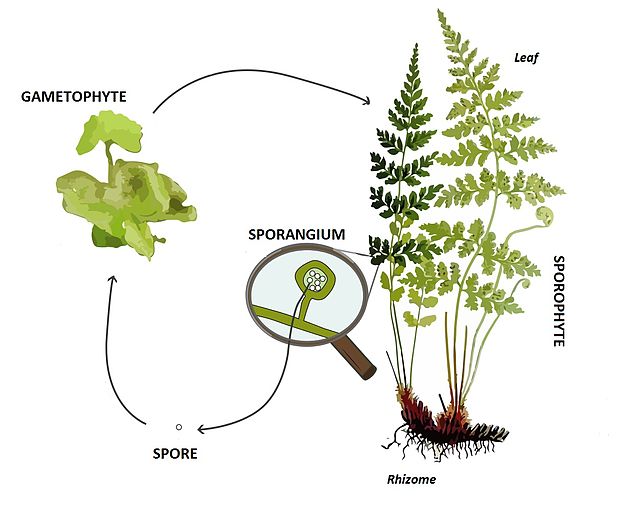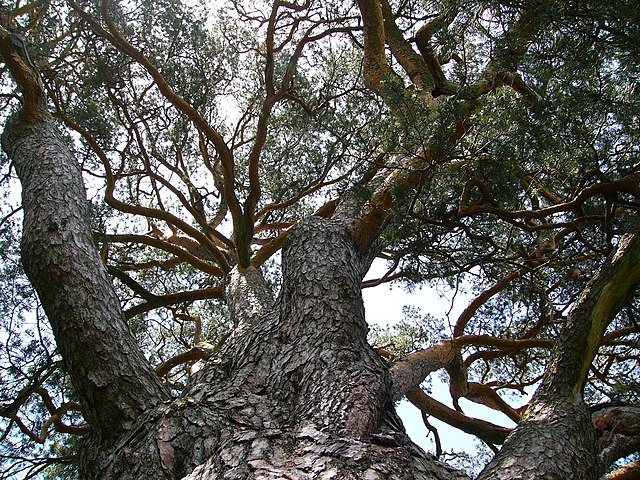Glossary of plant morphology
This page provides a glossary of plant morphology. Botanists and other biologists who study plant morphology use a number of different terms to classify and identify plant organs and parts that can be observed using no more than a handheld magnifying lens. This page provides help in understanding the numerous other pages describing plants by their various taxa. The accompanying page—Plant morphology—provides an overview of the science of the external form of plants. There is also an alphabetical list: Glossary of botanical terms. In contrast, this page deals with botanical terms in a systematic manner, with some illustrations, and organized by plant anatomy and function in plant physiology.
An acaulescent species of Streptocarpus has only one leaf, and appears to have no stem
Pteridophyte
1: Pedicel 2: Receptacle 3: Nectary 4: Sepal 5: Petal 6: Filament 7: Anther 8: Stigma 9: Style 10: Ovary 11: Ovule 12: Bract
Prop roots in Ficus benghalensis in Indian Botanic Garden.
Phytomorphology is the study of the physical form and external structure of plants. This is usually considered distinct from plant anatomy, which is the study of the internal structure of plants, especially at the microscopic level. Plant morphology is useful in the visual identification of plants. Recent studies in molecular biology started to investigate the molecular processes involved in determining the conservation and diversification of plant morphologies. In these studies transcriptome conservation patterns were found to mark crucial ontogenetic transitions during the plant life cycle which may result in evolutionary constraints limiting diversification.
Inflorescences emerging from protective coverings
Asclepias syriaca showing complex morphology of the flowers.
Looking up into the branch structure of a Pinus sylvestris tree
Variation in leaves from the giant ragweed illustrating positional effects. The lobed leaves come from the base of the plant, while the unlobed leaves come from the top of the plant.








